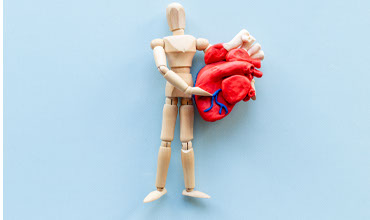Heart disease is the leading cause of death among women in the United States. According to the Centers for Disease Control and Prevention (CDC), it accounts for 20% of female deaths.
Coronary artery disease, also commonly known as coronary heart disease or atherosclerosis, is the most common type of heart disease. More than 6% of women over the age of 19 are afflicted by it, which can lead to a heart attack or heart failure.
Heart conditions, for which women are at higher risk than men, include cardiac syndrome X, angina (chest pain) and broken heart syndrome (stress-induced cardiomyopathy). Women can also be affected by several other heart conditions. These include heart failure, heart valve disease, arrhythmia (irregular heartbeat) and atrial fibrillation (Afib).
Prevention
Several risk factors for heart disease cannot be modified. Family history, race, gender, menopause and age all play a role in heart disease. Still, many risk factors can be changed, according to Cleveland Clinic. To reduce your risk for disease:
- quit smoking
- lower your total cholesterol, LDL and triglycerides
- increase your HDL (good) cholesterol
- reduce your blood pressure if it is high
- keep diabetes under control
- maintain a healthy body weight
- eat heart-healthy foods
- exercise regularly
- reduce your stress
While a glass of red wine a day may offer some benefit to your heart by increasing your HDL cholesterol, medical experts caution against more than one drink per day. Studies have found that high alcohol consumption can damage the heart. Although some studies suggest alcohol may be beneficial in moderation, others have shown the opposite. Cleveland Clinic recommends if you don’t already drink alcohol, not to begin.
Heart attack signs
Often, women experience symptoms of a heart attack differently than men. Most notably, women don’t always experience crushing chest pain. Instead, they may feel tightness or pressure in their chest. As a result, symptoms can go unnoticed or are easily brushed off. If the pain or discomfort goes away and then comes back or lasts for more than a few minutes, it could be a sign of a heart attack.
Other symptoms include:
- shortness of breath
- pain, discomfort, weakness or heaviness in either arm
- discomfort in the neck, jaw, upper back, shoulders or stomach
- indigestion, nausea or vomiting
- cold sweats
- fatigue
- sleep disturbance
- dizziness or lightheadedness
What to do if you’re having a heart attack
Call 911 immediately and have them dispatch emergency medical services (EMS). This is usually faster than having someone drive you to the hospital.
Also, if you’re in a public place, such as work or a store, a defibrillator may be available. Ask whomever you see first to check. Defibrillators come with easy instructions and could save your life.
Finally, take an aspirin, says Anthony Komaroff, MD, editor-in-chief of Harvard Health Letter. He recommends a standard dose of 325 mg that isn’t coated. “Chew it, and then swallow it with a glass of water,” says Komaroff, to quickly get it into your system. This can slow blood clotting and limit damage to your heart.
Kimberly Blaker is a freelance writer. She also owns an online store, Sage Rare & Collectible Books. www.sagerarebooks.com

















